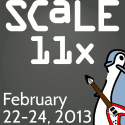Il 21 di Dicembre è stata rilasciata Linux Mint 14 versione Xfce, nome in codice Nadia.
Questa versione di Mint è basata su Ubuntu 12.10 e fornita con l’ambiente desktop XFCE come i miei lettori probabilmente sanno ho installato Mint 13 XFCE sul mio nuovo desktop, e così ho deciso di aggiornare la mia installazione a questa nuova release.
Come prima cosa, consiglio di effettuare l’aggiornamento a questa versione?
Sì e no, Mint 13 è basata su Ubuntu 12,04 che è una distribuzione con Long Term Support, questo significa che, come le altre versioni LTS la 12.04 avrà aggiornamenti per 3 anni, e comprenderà point release cioè aggiornamenti pacchettizzati assieme per abbreviare il download per utenti che installano un rilascio più avanti nel suo ciclo di vita. I point release e le date sono le seguenti: 12.04.1 (23 agosto 2012), 12.04.2 (31 gennaio 2013), 12.04.3 (15 agosto 2013) e 12.04.4 (24 gennaio 2014). Non ci sono ulteriori rilasci programmati dopo il rilascio di Ubuntu 14.04 LTS.
Quindi, se si è soddisfatti del software e tutto l’hardware funziona non avete forti motivi di farlo.
D’altra parte, se come me avete un D-LINK N 150 aka DWA-125 o altro hardware che non funziona perfettamente con il vostro kernel un aggiornamento potrebbe aiutare, spoiler: Questo aggiornamento mi ha aiutato a rimuovere tutti i driver proprietari della mia installazione. Continue reading »

 Ho ricevuto una mail su questa conferenza, e volentieri la propongo ai lettori di Linuxaria. SCaLE sta per South California Linux Expo ed è tenuto presso l’aeroporto di Los Angeles, all’Hilton dal 22 al 24 Febbraio 2013.
Ho ricevuto una mail su questa conferenza, e volentieri la propongo ai lettori di Linuxaria. SCaLE sta per South California Linux Expo ed è tenuto presso l’aeroporto di Los Angeles, all’Hilton dal 22 al 24 Febbraio 2013.